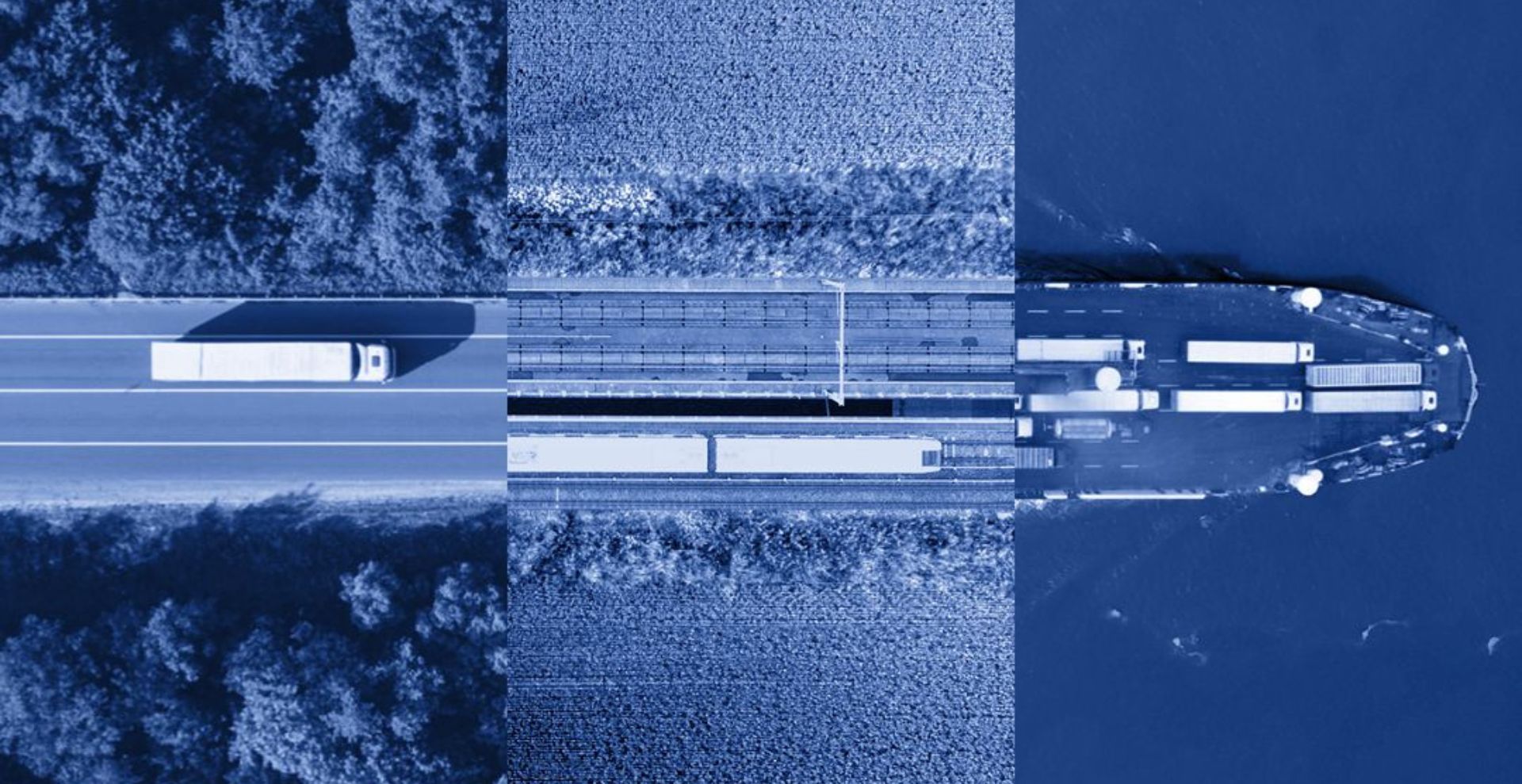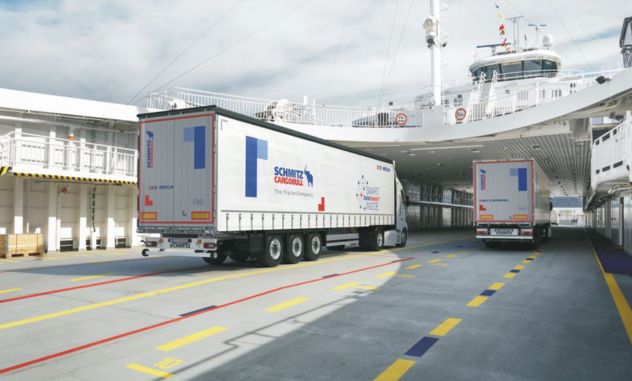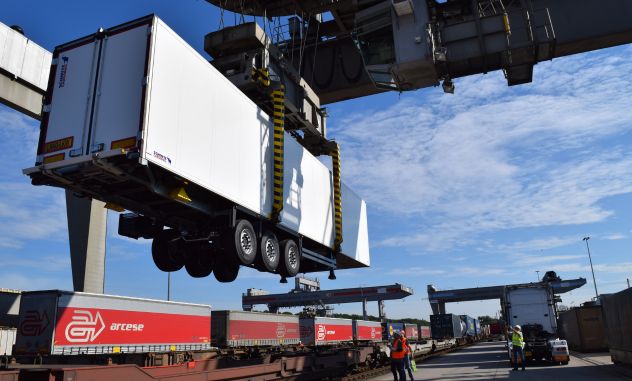New paths in intermodal transport

Environmental protection and sustainability are becoming increasingly im-portant factors in the logistics industry. Hardly any freight forwarder today is not thinking intensively about handling their transports with reduced CO2 emissions. For long distances, they are increasingly relying on intermodal transportation by truck, rail and ship. These promise high potential savings in fuel and greenhouse gas emissions. At the same time, freight forwarders are relieving the pressure on road transport, which has reached its capacity limits, and reducing traffic congestion. The bottom line is that it is important for operators to find a good balance between emissions generated, transit time and transport costs.

Intermodal transport combines the strengths of different modes of transport such as rail, truck and ship extremely efficiently. Combined transport (CT) also plays an important role in increasing the use of rail for freight transportation. This means that trucks are only responsible for the pre- and post-carriage - the so-called first and last mile - to and from the transshipment terminal. The main leg - i.e. the much longer transport section in intermodal traffic - is handled by rail, and in some cases also by RoRo ferries. Transshipment between road-rail or road-waterway takes place in special terminals.
The rapid changeover between road and rail or sea makes high demands on the technology. The safety of the freight and the flexibility of the vehicles are paramount. Complete semi-trailers rarely travel on rail wagons or ferries. Often only the transport units - i.e. only the trailers or containers - are loaded onto the rail or ship. However, not every semi-trailer and not every container is suitable for this. For a smooth and efficient transportation process in intermodal transport, the transport units must have certain characteristics. Thanks to the proven modular system of the S.KO box semi-trailers, the S.CS curtainsider semi-trailers, and the S.BO dry freight semi-trailers from Schmitz Cargobull, these vehicle solutions are all suitable for intermodal transport with the appropriate equipment. They must be robust and stable for safe handling and trans-fer between the various means of transport. Easy handling for gantry cranes, reach stackers or forklifts, and a high level of safety, are mandatory.

The S.KO COOL semi-trailer box body from Schmitz Cargobull can be equipped with ferry equipment for accompanied and unaccompanied transportation. The S.KO is equipped with up to four pairs of ferry lashings to secure the vehicle on the ferry. The rear underride guard is fitted with a skid to minimise damage caused by touching down during roll-on, roll-off operation. The ferry lashings simplify securing on board. The Dynamic Ramp Protection System, the scuff plate and the rear wall protection strips protect the body. In CT on land, the S.KO COOL semi-trailer box body is optimally equipped for fast and damage-free rail loading. The transverse reinforcements in the insulated floor and the optionally available spare wheel holder located behind the axle unit meet the requirements for rail transport. The high stability and strength of the FERRO-PLAST deep-freeze semi-trailer easily absorbs the loads during rail and transshipment operations. The box body with reinforced side walls is additionally protected from crane grab mounts by large stainless steel scuff plates over the grab edges. Depending on customer requirements and usage, different envelope profiles are available for all refrigerated semi-trailers.
Schmitz Cargobull also offers the S.CS UNIVERSAL, S.CS MEGA, S.CS COIL and S.CS PAPER curtainsider semi-trailers for CT with a robust galvanised chassis. The curtainsider semi-trailers are also available for the different envelope profiles. Bolted and hot-dip galvanised grab rails and the Code XL certified body strength create the best conditions for CT and meet the high speeds on the railroad. The body is designed as standard for rail speeds of up to 140 km/h and offers optimum safety for freight when encountering rail traffic. In order to equip customers for all variants of truck technology, all common codifi-cations for rail-loadable S.CS curtainsider semi-trailers are available. The cor-responding ILU codification also significantly simplifies the loading procedure. For non-European rail routes, the S.CS curtainsider semi-trailers can be equipped with a TIR lock. Schmitz Cargobull also offers a comprehensive product package for the ferry operation of curtainsider semi-trailers and dry freight trailers, with ferry lashings and protective skids for the rear underride guard, for example. The vehicles can be optimally equipped for safe accompanied and unaccompanied transport. The innovative Schmitz Cargobull Power Curtain body for the curtainsider is also available for intermodal use and is a sensible alternative, especially for international use.

Standardised sizes have emerged for swap bodies and containers in intermodal logistics. Typical lengths of ISO containers are 20, 40 or 45 feet. They are loaded and transported on special container chassis, as Schmitz Cargobull also has in its range with four standard container chassis from the S.CF Intermodal Logistics series: the S.CF ALLROUND 20-45 for 20- to 45-foot containers, the S.CF LIGHT 40/40/45 for heavy-duty transport with 40- and 45-foot containers and the two chassis S.CF DOCK 20/40 and S.CF DOCK+ 20-40 for the main port of call. With this container chassis portfolio plus an extensive range of accessories, 20-, 30-, 40- and 45-foot containers can be accommodated in various loading positions. All chassis are available in gooseneck design. This means the Münsterland-based manufacturer covers over 60 percent of the demand for container chassis, which amounts to around 25,000 units per year in Europe. The chassis are easy to operate, require little maintenance and guarantee high availability. In addition, Schmitz Cargobull also offers services such as financing, spare parts supply and telematics.
In deviation from the rules of the Road Traffic Licensing Regulations, the permissible total weight for vehicle combinations in CT is up to 44 tonnes. In addition, exemptions from the Sunday, public vacation and vacation driving bans apply to CT, which makes it even more attractive for companies. And trucks used exclusively for pre-carriage and onward carriage in CT can even be exempt from vehicle tax.

